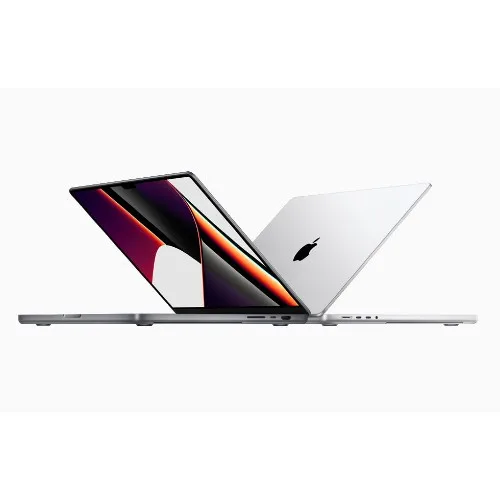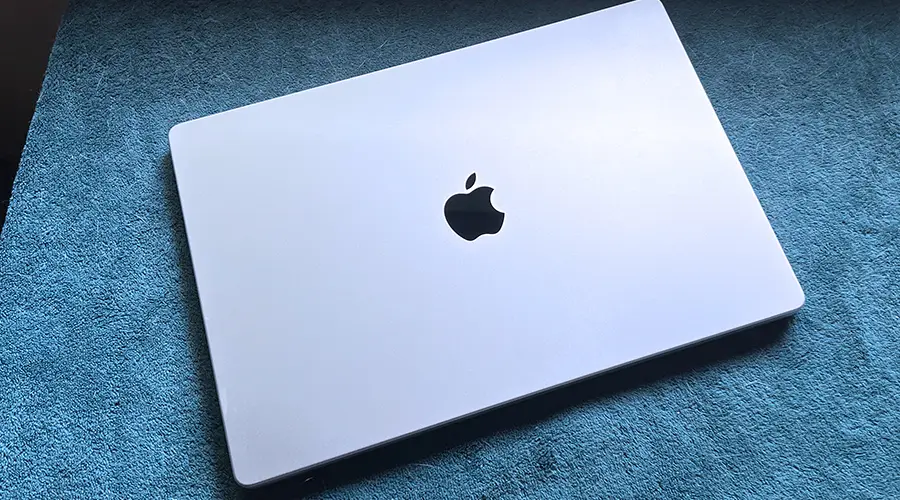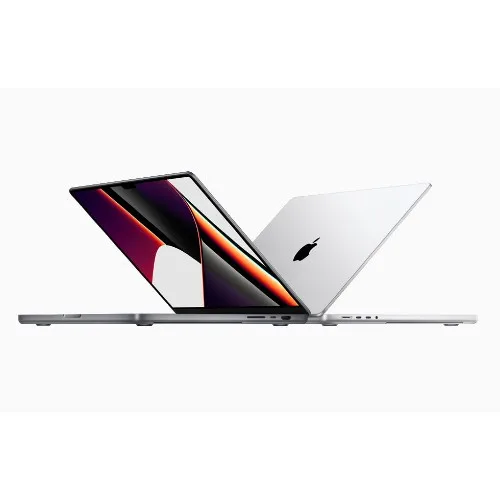Apple MacBook Pro 16-inch M1 Max review: Almost too powerful

Summary
Quick verdict: The Apple MacBook Pro 16-inch truly deserves its Pro suffix, thanks to the immense power of the M1 Pro and M1 Max chips under the hood. However, its pricing and size mean that it's not a laptop that everyone needs.
- M1 Max is extremely powerful
- Wider array of ports than the 13-inch M1 MacBook Pro
- Magsafe charging returns
- 120Hz Mini-LED display
- Death to the Touch Bar
- 1080p Webcam
- It costs HOW MUCH?
- Death for the Touch Bar
- Many users simply won't need this much power
- Storage upgrades are too expensive
- Camera notch is weird
- Wait, it really costs that much?
It would be tempting to call the Apple MacBook Pro 16-inch the supercar of Apple's "M1" computer line-up. It's got a mighty engine under the hood and an equally mighty price to contend with.
That would be the wrong simile, however, because the Apple MacBook Pro 16-inch (and equivalent 14-inch model, not that I've tested that) is much more of a delivery van.
You might think that's not as flattering a comparison, but the reality is that this is a very solid, very bulky workhorse of a machine. If you've got need for serious computing power for video editing, graphics composition or just plain old number crunching, it's got a lot of capacity for that. Rather than the one-trick supercar, this is a device that can do a lot of tasks at the same time without breaking a sweat.
However, just like a delivery van, it's not a device that every computer user needs. Nor is it easy to afford.
Design: Back to the future

Image: Alex Kidman/Finder
When Apple debuted the first M1 MacBooks in the M1 MacBook Air and M1 MacBook Pro, it essentially took the existing Intel-based MacBook designs and dropped its own Apple Silicon under the hood as far as end users were concerned. Not a radical departure from Apple's typical design style, in other words.
The Apple MacBook Pro 16-inch takes a different approach while at the same time very solidly relying on existing Apple designs. Where the smaller MacBook Pro makes do with dual USB C ports for power and peripherals, the Apple MacBook Pro 16-inch jumps back about 5 years in MacBook design terms, and for the better.
Five years ago, the MacBook Pro models had full HDMI, SD card readers and a multitude of ports including MagSafe charging. In 2021, the Apple MacBook Pro 16-inch has a full HDMI port, SDXC card slot, 3 Thunderbolt 4/USB-C ports and MagSafe charging. It's not quite a like-for-like drop, but it's remarkably close. What's nice here is that it makes it much easier for professional users to hook up monitors, additional peripherals or drop camera cards directly into the Apple MacBook Pro 16-inch.
If I wanted to be critical (and I usually do), I might say that it feels like there's a bit of wasted space on the sides that could have accommodated even more in ports or fan vents or the like. A 16-inch laptop is by definition a bit of a monster, and at 35.57 x 24.81 x 1.68cm and 2.15-2.17kg, this isn't a subtle laptop.
Open it up, and the retro hits keep coming, as the interactive Touch Bar has given way to a full set of function keys sitting next to the combination power button and TouchID sensor. I'm firmly in the camp that hated the Touch Bar and will not miss it even for a second, so that's a win for me. However, I can understand that some users really do prefer it. If that's you, the only MacBook Pro that still offers a Touch Bar is the 13-inch model.

Image: Alex Kidman/Finder
Where the MacBook Pro 16-inch looks to the future is in its display. As you'd expect, it's a 16-inch model, but with a mini-LED display rather than traditional LCD. Apple first used this on the newer iPad Pro 12.9-inch model giving it an incredible colour gamut and refresh rate capabilities, and these are both part of the Apple MacBook Pro 16-inch's appeal. It's a truly glorious looking screen, and one that professionals could easily use as a reference display on the go.
Slightly more contentious, and coming by way of Apple's iPhones, is the fact that the MacBook Pro 16-inch has a display notch. On a phone where screen space is at an absolute premium a notch makes sense. On a laptop, I'm not so convinced. It does allow the MacBook Pro to throw the menu bar "above" the workspace, but with uneven results.
Depending on your menu levels it's possible to "hide" menus under the notch right now, and you can even slide the mouse cursor under the notch, which is a little surprising the first time it happens. It's fair to say that Apple will probably alter macOS' behaviour around the notch in the future, but as it doesn't house a full FaceID camera system, it doesn't feel like the smartest design move.
What you do get is a very good 1080p-capable webcam. This is an area where Apple has lagged badly in the past few years, and it's one where it was noticeably poor given the rise of Zoom and other video conferencing services during the pandemic. 720p just wasn't going to cut it any more, so the jump to 1080p is very welcome.
MacBook Pro 16-inch M1 Max performance: Pushing it to the max

Image: Alex Kidman/Finder
One of the big problems with the Apple MacBook Pro 13-inch is that it runs on the Apple M1 SoC. Not that the M1 SoC is a slouch in performance terms, but it's the same chip (excluding the lower GPU variant) across the Pro, Air, Mini and iMac systems.
What that means is that it performs exactly the same across all those units, making the smaller "Pro" MacBook feel as though it's not particularly professionally focused. If you're looking at the 13-inch models, the MacBook Air remains the smart buy in that space.
For the newer Pro models, Apple is very much making a play for better performance. Like the other M1 models, everything from the CPU to the GPU to the memory is all on a single chip, which means that you do need to pick carefully when configuring. The old days of dropping a RAM stick into a MacBook are completely dead and gone.
Where this gets more complex is in the array of configuration choices.
The lowest cost MacBook Pro 16-inch will run you $3,749 with the M1 Pro chip with a 10-core CPU and 16-core GPU, along with 16GB of RAM and 512GB of storage. You can bump that up to 32GB for an additional $600, and throw 1TB - 8TB storage on board, although the latter will set you back a hefty $3,600. Apple has long charged a serious premium for onboard storage, and there's sadly no change here.

Image: Alex Kidman/Finder
If you want or need more than 32GB of RAM, you have to opt for the higher specification M1 Max with a 10-core CPU and 32-core GPU, 32GB of RAM and a 1TB SSD. The base model there will cost you $5,249, adding $600 again if you want 64GB of RAM and up to $3,300 more if you wanted that top specification 8TB storage option. If you want to go all out – or more realistically, if you can convince your boss you need it – a top spec MacBook Pro 16-inch will cost you a hefty $9,149.
Configuration options are great, but they do also mean that there's going to be a lot of variance in terms of performance and capabilities. The model Apple supplied me for review was the M1 Max variant with 64GB and a 2TB hard drive. If I wanted to keep that, Apple would want $6,449 from me. Nobody is going to expect a $6,449 laptop to run the same way that a $3,749 model would.
Apple's hype around the M1 Max has been pretty breathless, but could it live up to the hype? The short answer is yes.
The long answer is yes, but it's very much worth considering if you need this kind of power and can meet those kinds of price points. The MacBook Pro is that delivery truck when it comes to performance, and I can neatly show that with some comparative benchmarks against other MacBook models, including the M1 and several older Intel-based variants.
That's some seriously sexy power right there, although it's power you really do need to push in specific directions. All that GPU power is superb for video rendering, for example. A sample Final Cut Pro project that took me just over 3 minutes to render on an M1 MacBook Pro 13-inch blazed through in under a minute on the MacBook Pro 16-inch, to give a real world example.It's that kind of task that you really want to throw the MacBook Pro 16-inch M1 Max at, because in simpler applications it's a waste of grunt. Anything that only needs a single CPU core isn't going to run any faster than on a comparable and massively cheaper M1 MacBook, for a start.
This is the absolute crux of whether the Apple MacBook Pro 16-inch is going to make good sense to you. If you're already maxing out what an M1 MacBook Pro can do and you really do need more power, then this is the system to buy. If you don't, then it's total overkill. Overkill can be fun, and I won't deny that I've also used that glorious mini-LED display for a little high definition streaming viewing as well, but it's not really what the MacBook Pro 16-inch is for.
MacBook Pro 16-inch M1 Max battery: MagSafe is back, but different

Image: Alex Kidman/Finder
The MacBook Pro 16-inch is a chunky beast, and that gives Apple a lot of space to cram in batteries under the hood. You get a 70 watt-hour lithium polymer battery to run the beast, with Apple claiming up to 17 hours of video playback on a single charge.
That's totally achievable, too. In my own video tests I hit an easy 17 hours with around 10% battery left to go, but the issue here is that video processing isn't exactly a high-end task. You arguably shouldn't buy the 16-inch MacBook Pro just to watch YouTube, after all.
Put it to the task of more intensive use, and that battery life can drop rather more rapidly. It's still a very solid competitor in this space, and you should be able to get at least 10 hours of usage out of it, unless you are rendering 8K video 24/7. I didn't test that way to be clear, but if that's your use case, you'd probably want the power supply to hand at all times in any case.
Charging can be via USB-C, but the preferential method here is the welcome return of MagSafe charging to the MacBook Pro world. This uses a magnetically attaching charging cable, and it's a system that Apple had abandoned in favour of direct USB C charging from 2016 onwards. One slight pain point here if you're a long-term MacBook Pro user is that the new MacBook Pro 14- and 16-inch models use MagSafe 3, and it's not backwards compatible for older chargers, or capable of charging older MagSafe MacBooks.
It is fast, coming off a chunky 140W power brick. You can also optionally charge from USB-C, but at a much slower rate.
Should you buy the MacBook Pro 16-inch M1 Max?
- Buy it if you genuinely need a massive beast of a laptop.
- Don't buy it if your needs or budget are more modest.
The MacBook Pro 16-inch model as tested is an imposing laptop. Like any 16-inch model it's physically huge, and it matches that up with a substantial asking price.
It does justify that on performance grounds, but only if you're in the professional spaces where that kind of performance is worth real money. If completing those video rendering jobs is a more profitable enterprise when it's that much faster, then it's something of a no-brainer to buy.
For more general users, it's overkill, plain and simple. You should at least consider the slightly more affordable 14-inch model unless you need that extra screen size, and for most everyday users, the M1 MacBook Air would still be the smarter buy. Unless you've got a generous boss willing to splurge on a fancy overpowered delivery vehicle for your desk. In that case, go for it.
Pricing and availability
How we tested
The MacBook Pro 16-inch M1 Max was tested over a 1-week period, both using it as my daily production machine, which is well beneath its capabilities, as well as dedicated video rendering for performance and battery rundown metrics.
The model tested was supplied by Apple for the purposes of review. The author has been writing about and testing Apple equipment since 1998, back when Apple had yet even to jump ship over to Intel processors, let alone its own M1 Silicon. Anyone else miss the days of the Apple Power Mac G4 Cube?
Specifications
General
Display
Features
Images: Alex Kidman
More Finder reviews
- Apple HomePod 2nd Gen review: Yes, it’s better
- Creality Ender-3 S1 Pro Review: Plenty of creative potential, but you’ll need patience too
- Apple Mac Mini M2 Pro review: A tale of two computers
- Apple MacBook Pro M2 Max 16-inch review: Next-level power
- HTC Vive XR Elite: Is this the perfect mix of Flow and Pro?
